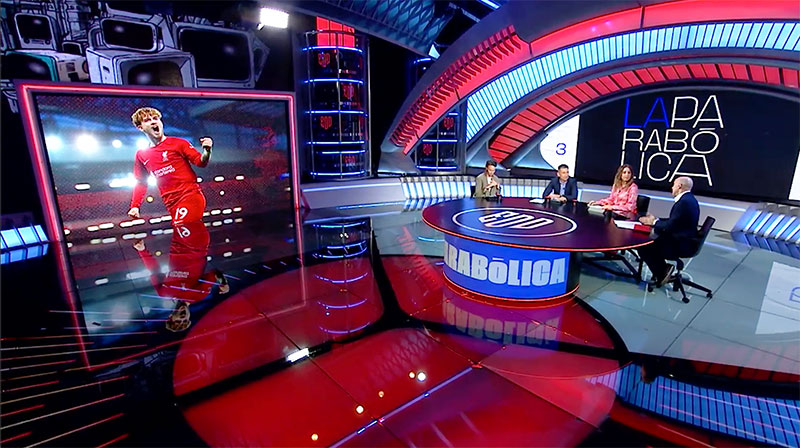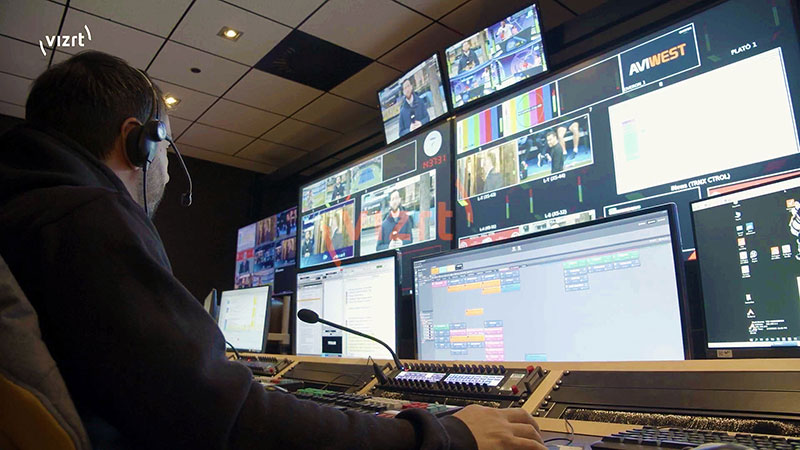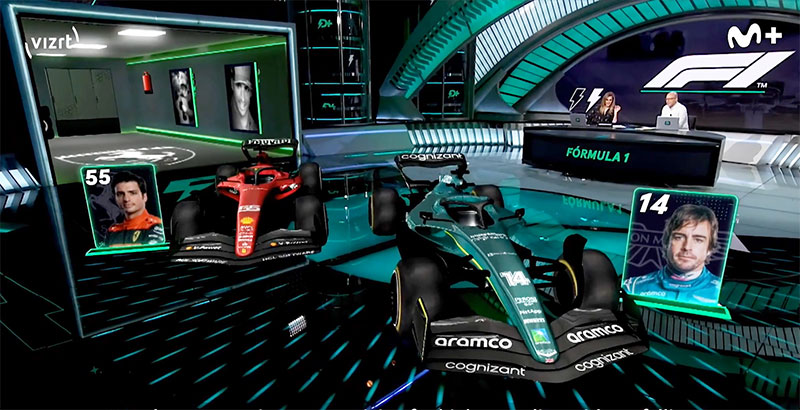Movistar+ uses Vizrt’s Viz Multiplay graphics workflow to efficiently create diverse content, engage younger audiences and adapt to ongoing changes in the fans’ viewing habits.

Movistar+, a major distributor of sports content in Spain, also produces and distributes 20% of the country's total broadcast content. Reaching this position in a highly competitive market has meant moving away from traditional television broadcasts to appeal to younger fans and try to align with their continuously evolving viewing habits.
Finding that many viewers watch on mobile devices for very short periods of time, the studio has changed the style of its broadcasts to favour compelling graphics. Because of the volatile nature of the fans’ attention span and willingness to focus on any single source of information, Moviestar+ aims to deliver a complete visual story, more or less all at once.
Keeping Viewers Engaged
“We want to have a lot of simultaneous information on the screen, to keep our viewers engaged without losing their attention for a second,” said Julio Morales, who is Content Director of #Vamos, one of Movistar+’ channels that leans heavily on motion graphics. The team is using Vizrt's control and graphics tools to combine multiple layers of storytelling, delivering shows that encompass various sports genres, from football to car racing.

To improve production efficiency against large quantities of diverse content, Movistar+ uses Viz Multiplay to control the playout of content to screens and video walls. Viz Multiplay makes it possible to produce multiple shows using a single studio.
Working in a potentially confusing environment, Graphics Operator Javier Coulouscou said, “Viz Multiplay makes our job much simpler. It has straightforward, highly illustrative interface, but presents a complete view of the set’s content and layout, which makes it easier for me, on an operational level, to control everything.”
One Operator, Multiple Screens
Movistar+’ response to viewers’ demands is an example of how sports platforms can take advantage of Viz Multiplay. With tools allowing a single operator to control all screens and video walls within one studio, Movistar+ uses its physical space as a dynamic studio.
The production set-up integrates Vizrt tools directly into its sports workflows so that a level of consistency can be enforced. It also means that the team can introduce new ways of engaging with fans – especially younger ones – and optimise their graphics over time, without significantly altering the workflow or losing the main features of the Movistar brand.

For instance, regarding the use of video walls, Movistar+ merges its physical and virtual worlds, incorporating augmented reality elements into the narratives. The Viz Multiplay workflow lends itself to this style of live delivery. Viz Multiplay sends content to the Vizrt Viz Engine real-time compositor, built to control live video inputs, clips, 2D and 3D graphics, and still images. Viz Multiplay is configurable to control single or multiple Viz Engine systems, supporting multiple graphics channels.
Screen Management
The Viz Multiplay layout design tool creates unique, job-specific configurations – including the video wall displays. These configurations become presets, so that the positioning of content changes happens live as viewers watch the transitions and animated effects.
Using the one interface, content for all screens can be previewed and played-out from a control room or in the studio from touchscreens. The screens can be different resolutions and aspect ratios, and control of each screen or triggering content to multiple screens, can be handled with one touch or click.
Selecting content and building playlists is also simple, using Viz Multiplay’s tools to browse media elements from the Vizrt Viz One media management system. Newsroom journalists can also define their own content from rundowns for Multiplay using Viz Pilot inside their newsroom control system [NRCS]. Playlists appear in the Multiplay interface as a series of thumbnails depicting the content of each media item. Operators either trigger playlists as they were created in rundowns, or re-arrange the content on-the-fly. www.vizrt.com




